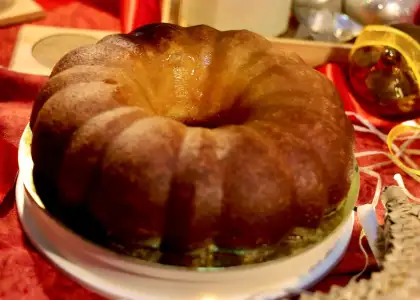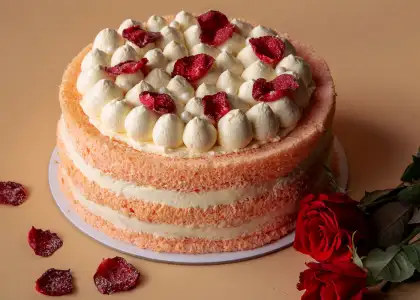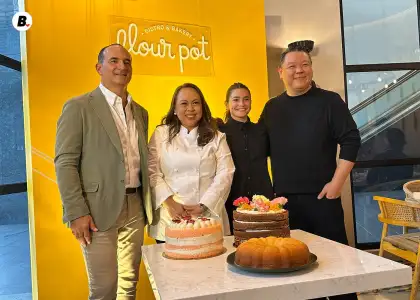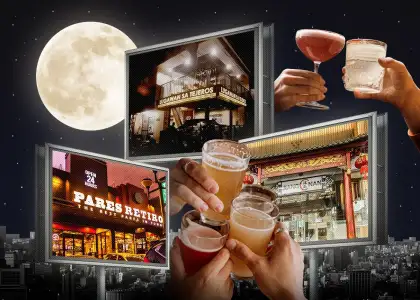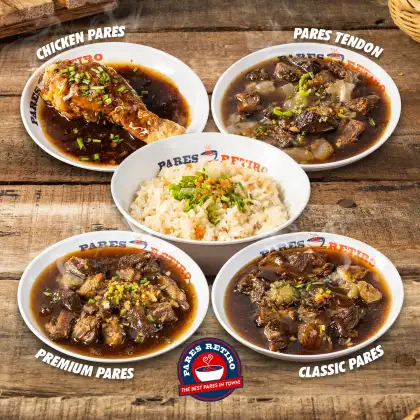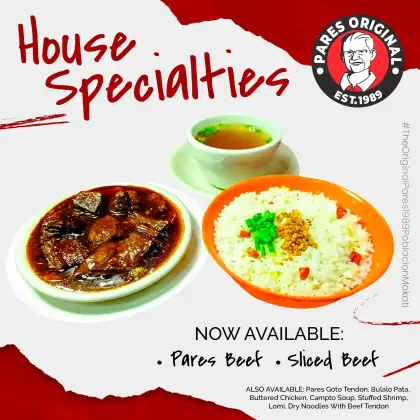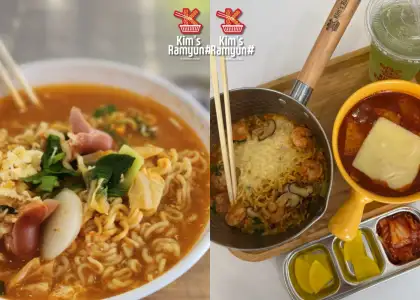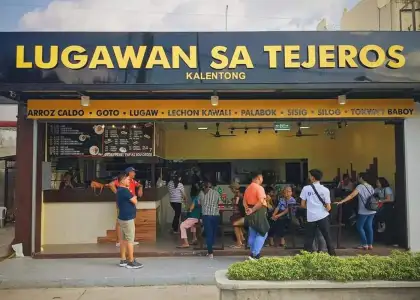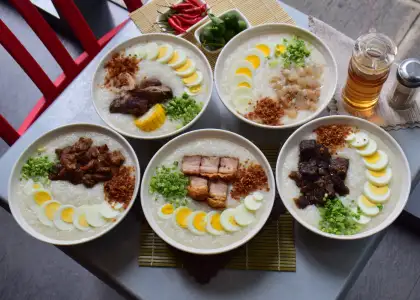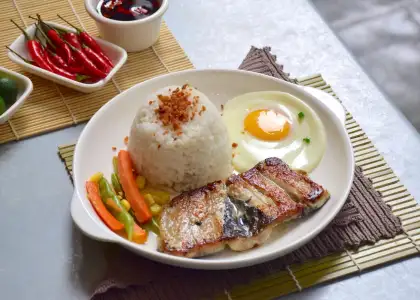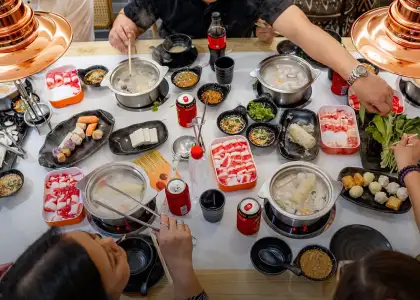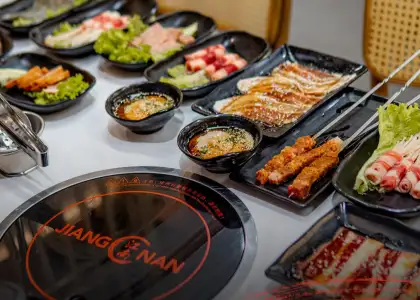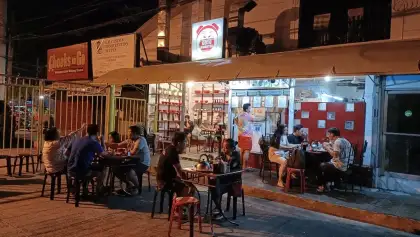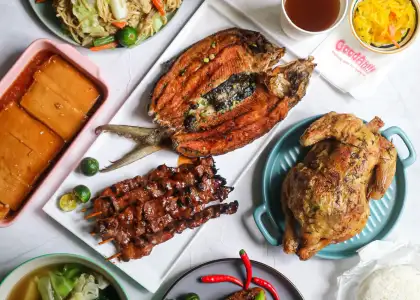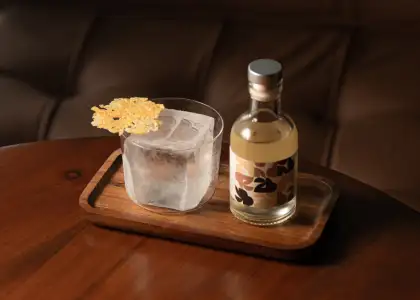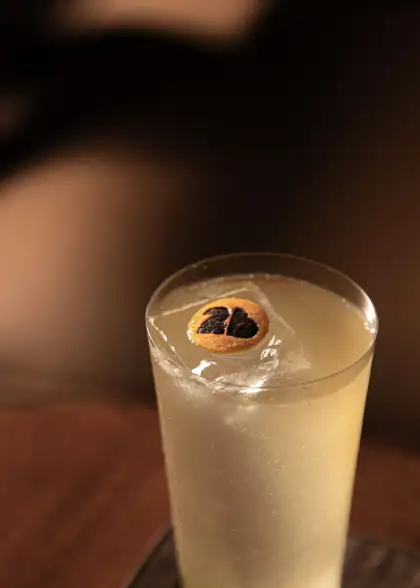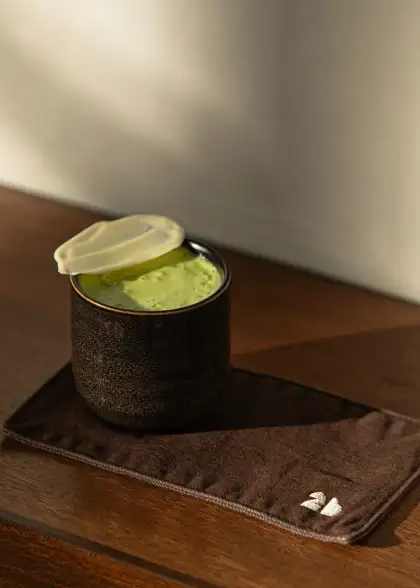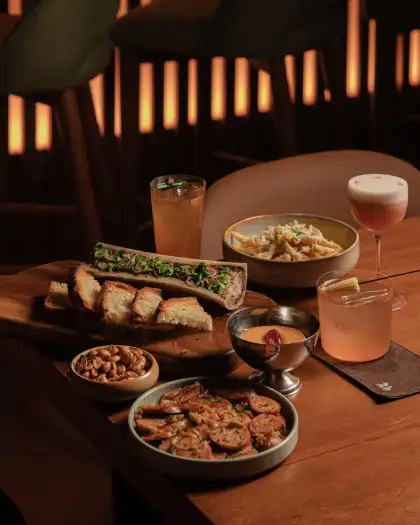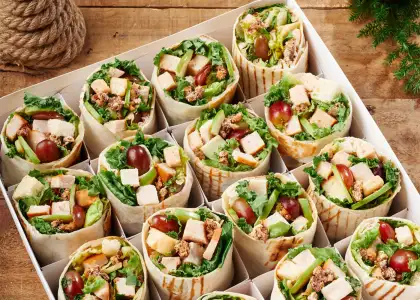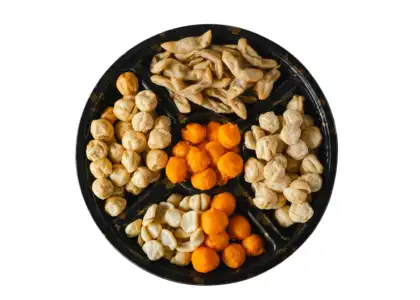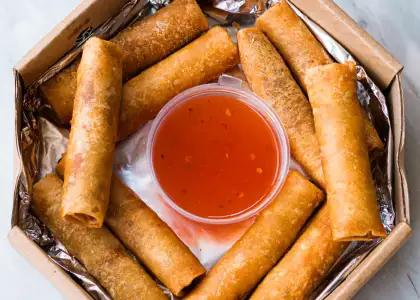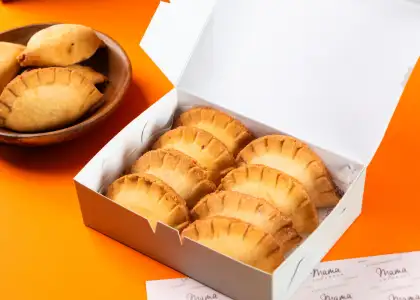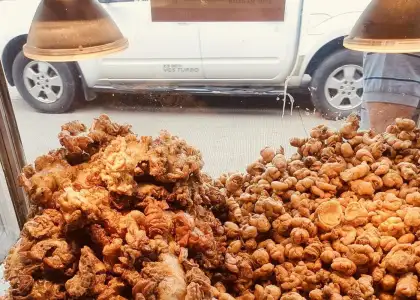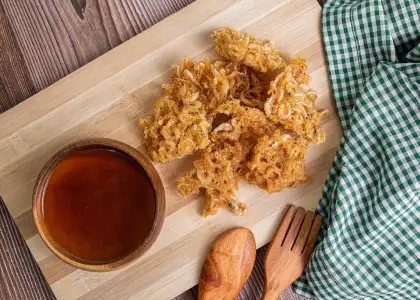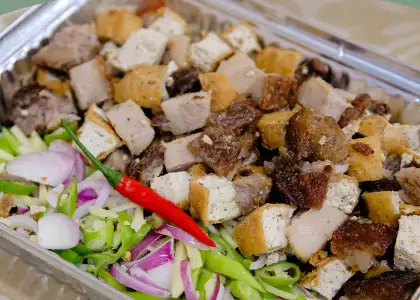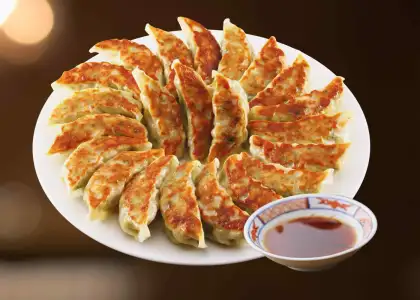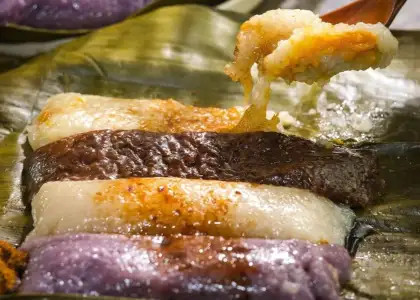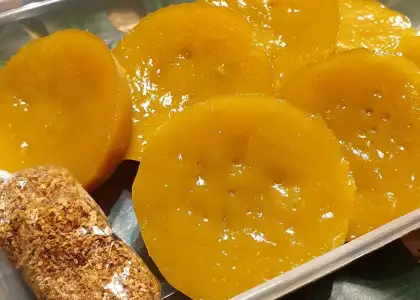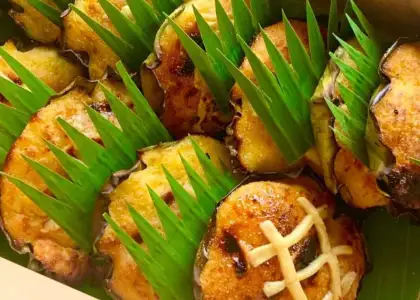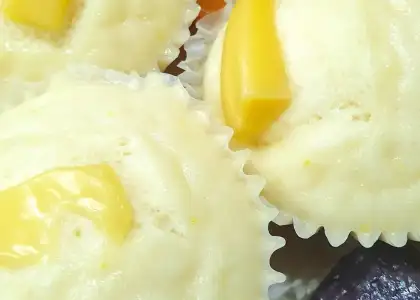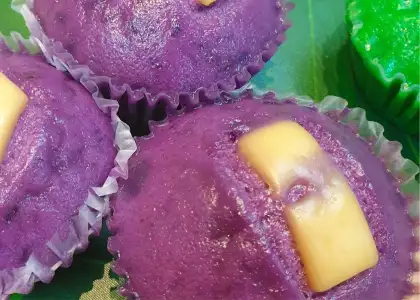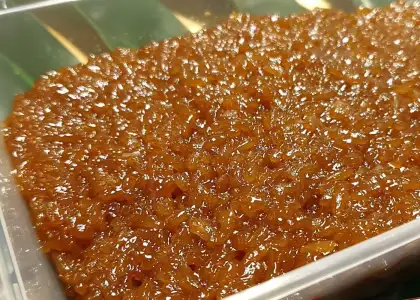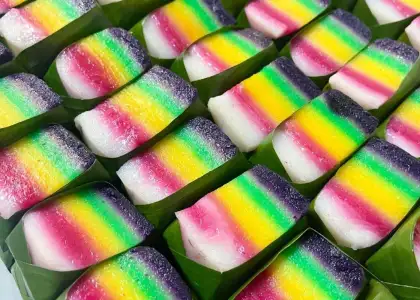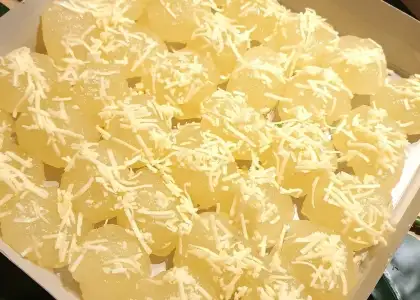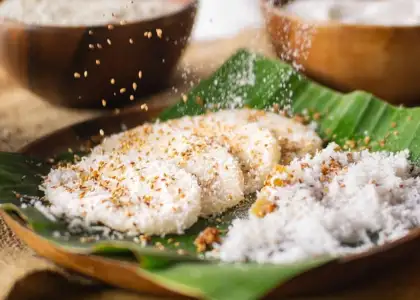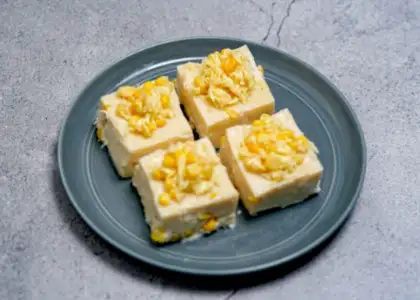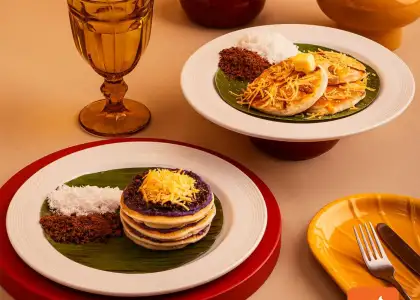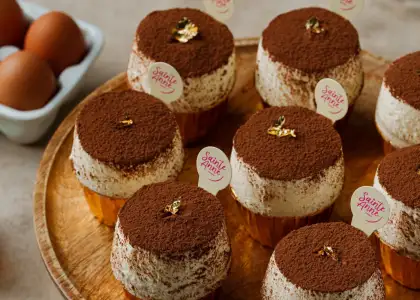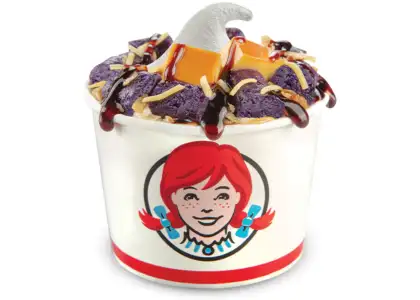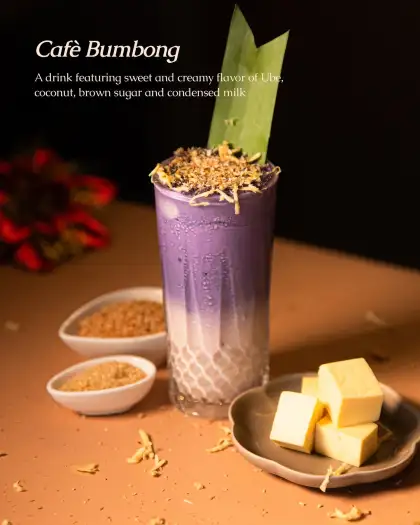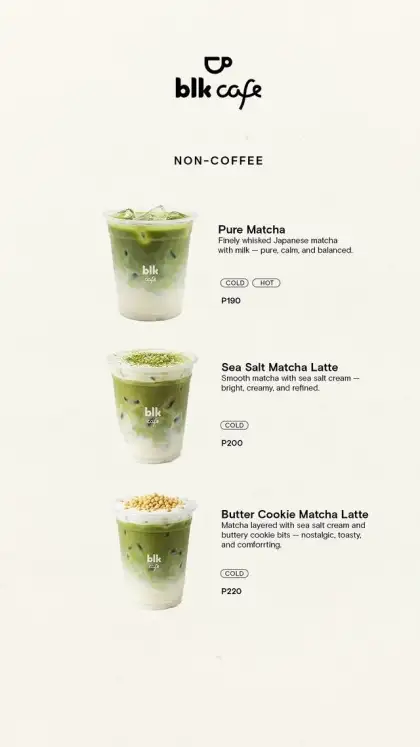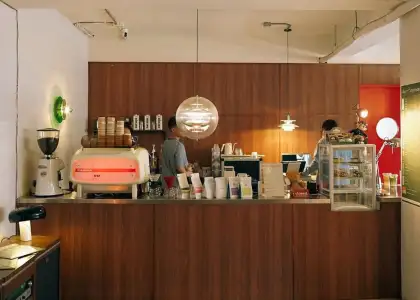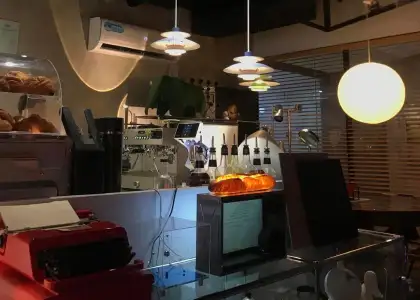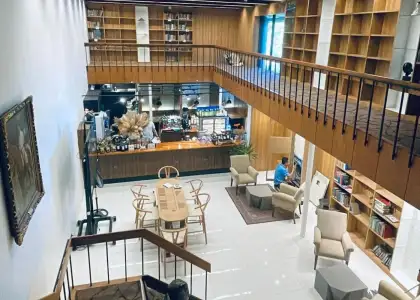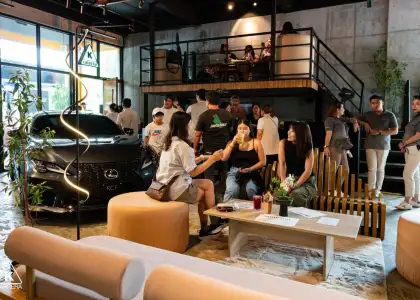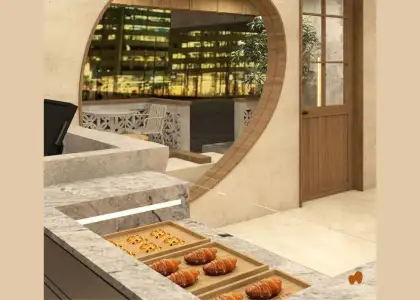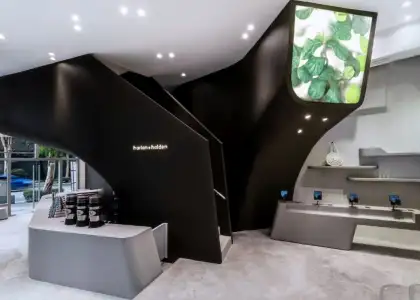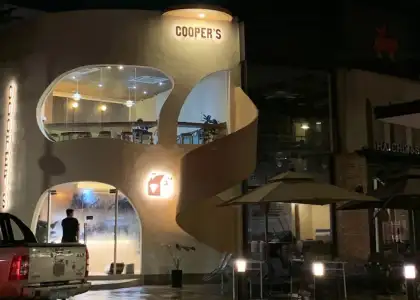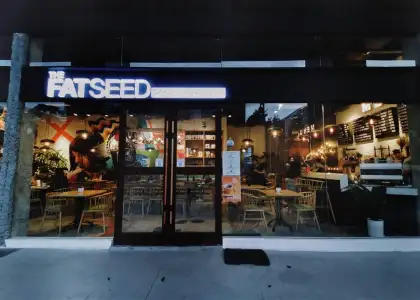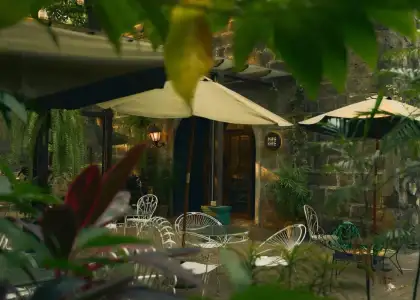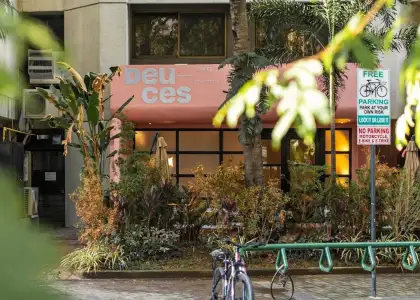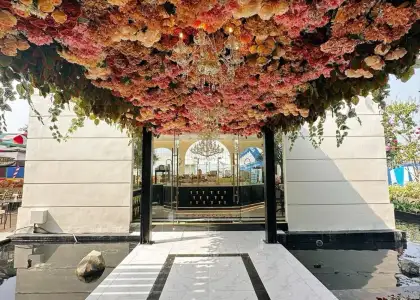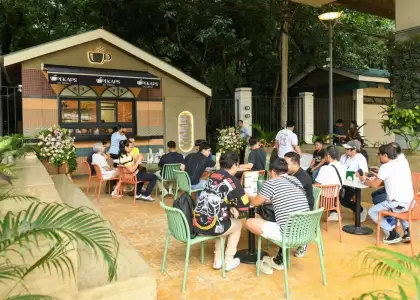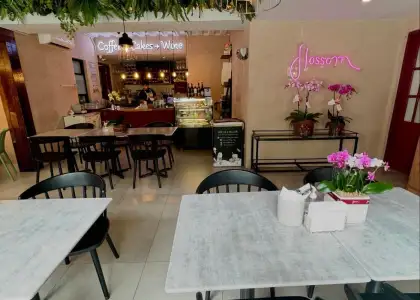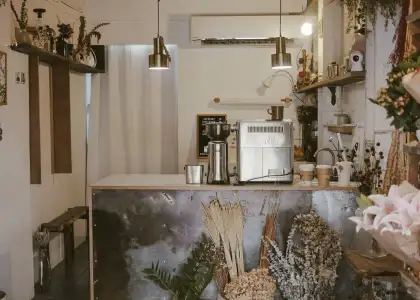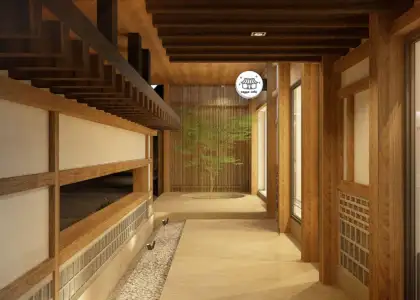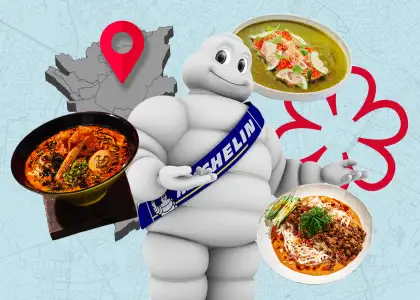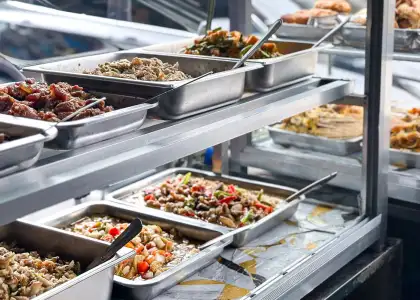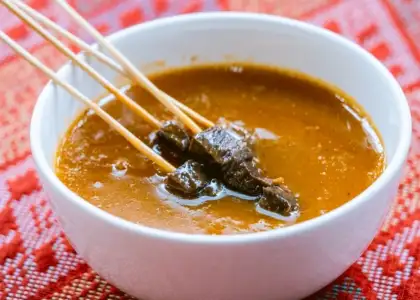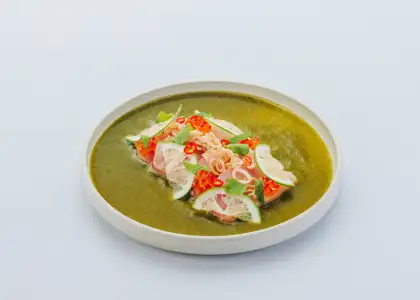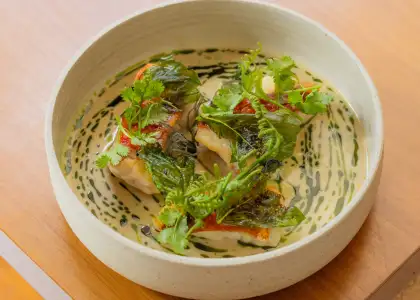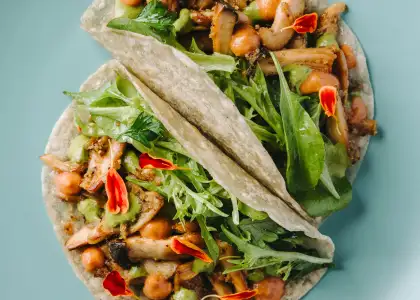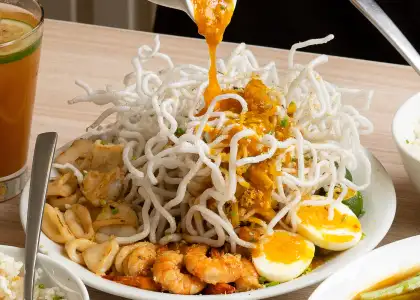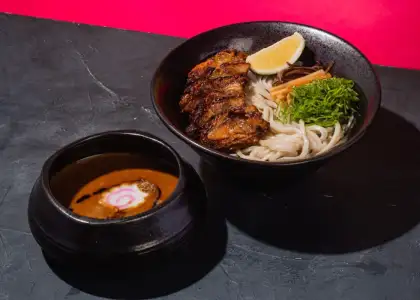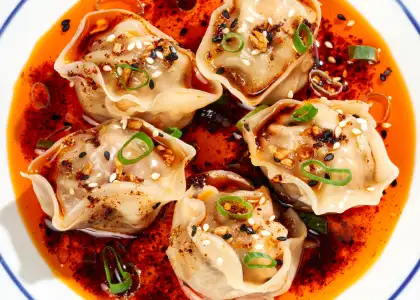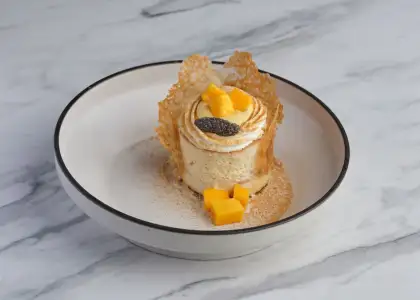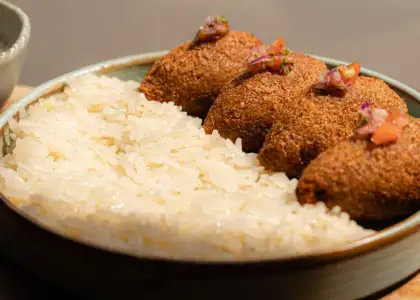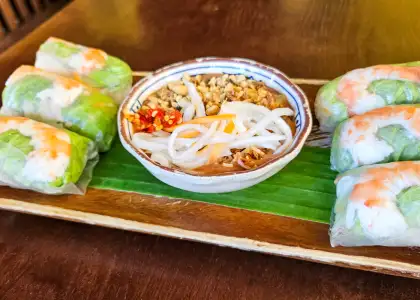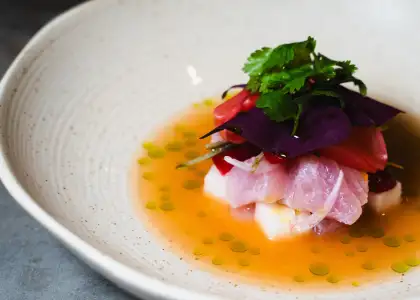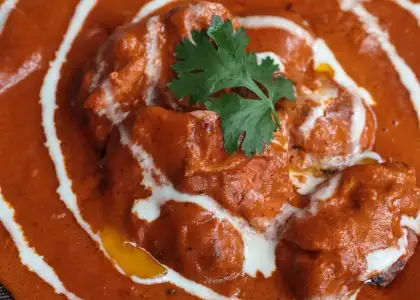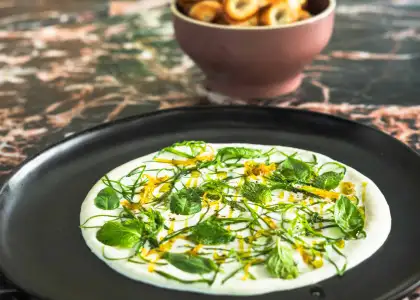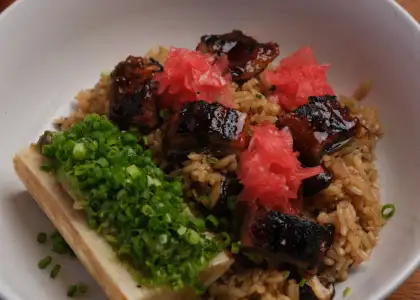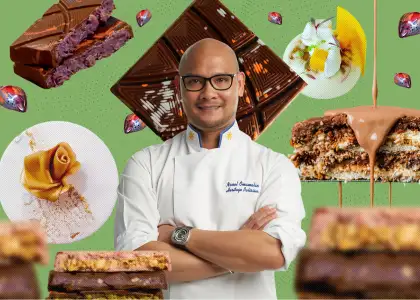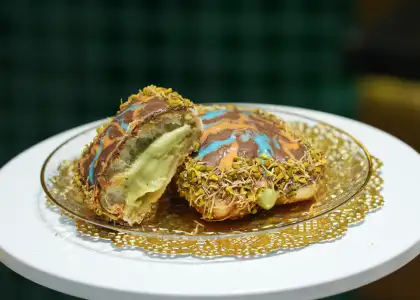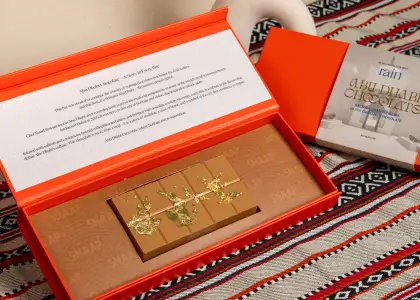Exclusive Preview: Sabai Launches Unapologetically Authentic Thai Menu
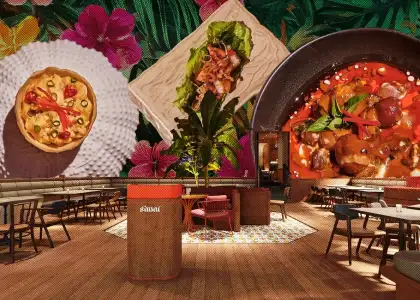
Bonifacio Global City (BGC), arguably Metro Manila’s most famous central business district, isn’t shy about its status and glittering skyline. Towering buildings, fast-paced corporations housed within them, and the hustle all converge in this 240-hectare estate in the heart of Taguig City. Amongst them is Shangri-La The Fort, an unmistakable institution in BGC where million-peso deals can be signed while an industry convention keeps the place abuzz on another floor. In other words: BGC is a place where business happens.
In this hustle and bustle, a new Thai restaurant dares to challenge the norm: Sabai. This up-and-coming foodie spot is built around two ideas: that great Thai food should be genuinely authentic, and that meals should feel as relaxed as its name implies. “Sabai (สบาย)” means “relaxed” in Thai, and by happy accident (which is to say, of course, that it was well thought out), “sabay” in Tagalog means “together.” Sabai aims to deliver both.
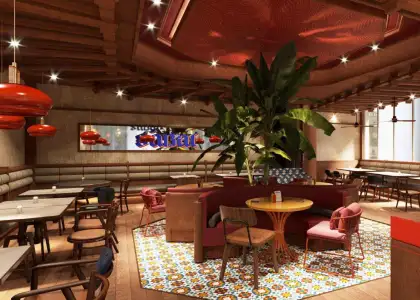
Sabai is the latest project from Alex Offe and Michael J. Needham, the Franco-British duo behind the Brazilian-Japanese fusion restaurant Uma Nota next door.
They recruited Songkhla-born Chef Assavadathkamjorn “Tob” Puwadol, whose résumé runs from Bangkok’s Le Normandie to two Michelin star Sühring. And the plan of the trio was simple: cook Thai food the way Chef Tob would at home, then let Manila catch up.
Vibe & Vision
Sabai’s preview dinner tasting was held at Uma Nota, as the home for the upcoming Thai spot is yet to be revealed. They posted teasers online, however, on what guests can expect, and the vibe is clear: wooden textures, bright hues, and pops of luscious greenery with fresh plants decorating the venue. As they said in their post: “Every detail is a nod to Thailand’s wild, wonderful spirit.”
It’s stylish, but the seats are padded like living room couches — a sign that lingering is welcome. As Offe shared with media on opening night, the goal is to make Sabai an accessible place, “The kind of place you can go to two, three times a week, no problem.”
While we haven’t seen the place just yet, hopefully their vision translates to a place that feels closer to a neighborhood hangout rather than a spot in a five-star hotel’s annex. Even though it sits inside one of the metro’s top-tier postcodes, Sabai aims for an atmosphere upscale enough for important milestone celebrations, but approachable enough that you don’t have to know which utensil to pick up when.
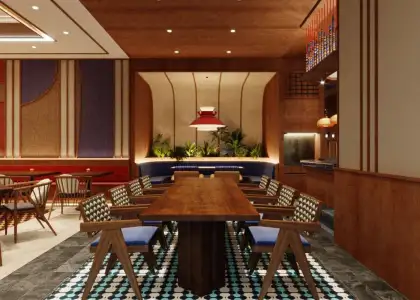
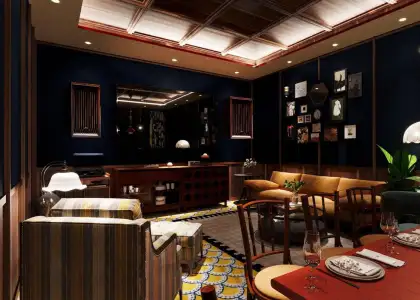
Don’t let the modern interior fool you, however, because when it comes to the flavors, Sabai is as authentic as it gets. Offe and Needham revealed in an Instagram post that they spent the past half year going to Bangkok nearly once a month, eating at street stalls and Michelin-starred restaurants alike to really understand Thai cuisine.
Chef Tob, meanwhile, ensures they deliver as the chef proudly reveals his heritage: a Southern Thai upbringing, his mother hailing from Isan, and a Northern Thai grandmother.
“I realized that Thai food from each region has its own distinct character, which made me want to explore and learn more about it…I want my guests to feel like they’ve been invited to a meal at my home, as if they’ve discovered something special, and as if they’re traveling through Thailand. I can’t wait for them to taste the dishes. The menu here is created from stories, people, and memories from Thailand, which I’ve brought together and placed in this restaurant,” Chef Tob narrated on their Instagram.
One immediate decision emulates this philosophy: no Pad Thai. While this dish is almost synonymous with Thailand, it actually emerged in the 1930s as part of a government’s nationalist movement to unite the nation. Offe stressed this on opening night: “We’re sticking to the philosophy. When you go to Thailand, you rarely see locals eating Pad Thai.”
Debatable as his statement may be, even amongst Thai locals, one can’t deny that with Thailand’s over 700-year-old existence as a unified country, there are hundreds — if not thousands — of dishes that equally deserve their time in the spotlight. Perhaps it wouldn’t be the worst thing to happen if Pad Thai is missing from the menu.
In fact, Offe confidently stated that “20 to 30% [of Sabai’s menu] will be dishes that most people have never tried yet.” He revealed that they want to offer more than just great food; they want their guests to say, “Hey, I learned something new [about Thai cuisine] today.”
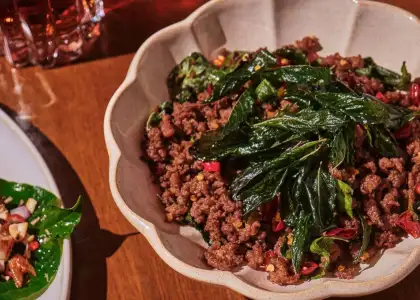
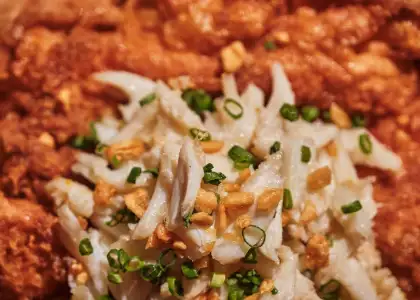
To stay true to their philosophy, Offe revealed that they’ve made sure each element in their dishes results in truly authentic flavors, going so far as shipping in ingredients from Thailand. “We’d rather make sure it’s 100% authentic than compromise at 80%,” he added. Although one concession they’ve made, Offe shared, is toning down the spice levels, while still maintaining a spicy flavor that locals would recognize.
“[Our visits to Thailand] really helped us home in on what an authentic Thai restaurant looks like, and really make sure this is not an impression of Thai food… The idea is not to reinvent Thai food but really bring across the most authentic version we could,” Needham also said in their Instagram post.
Early Look at Sabai’s Menu
For starters, Sabai served three appetizers: Khao Kreab Cream Mun Pu, Pla Kung Yang, and Tom Sap Pla Khao.
Starting with the Khao Kreab Cream Mun Pu, which is a crispy rice pancake topped with a rich crab fat salad. As the first bite, it set the tone for the rest of the meal, and we were instantly met with an intense heat we were unprepared for. That was on us, though; they had already underscored their philosophy on serving “authentic” Thai food — and that obviously comes with its signature spice. The spiciness, which we suspected was served by more than just the tiny slice of chili atop the crab fat, jolted us wide awake. But then the creamy, decadent crab salad washed over us, offering sweet relief from the heat (although it continued to linger in the best way possible).
Aside from being the perfect vehicle for the melt-in-your-mouth crab salad, the crispy rice pancake added textural contrast to an otherwise straightforward dish.
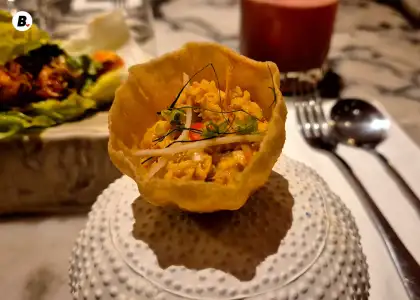
Next up was the Pla Kung Yang — thick chunks of lightly-charred tiger prawns, seasoned perfectly with a mix of lemongrass, Kaffir lime, and chili — which lifted the meal after the velvety finish of the Khao Kreab Cream Mun Pu. It had a smoky, Maillard depth that blended well with the bright notes of Kaffir lime and lemongrass.
The chili was not as prominent in this dish, but it was certainly not missing. Placed in a singular lettuce leaf, it was more than just a pretty way of packaging the dish, as the freshness of the lettuce reset the palate after every bite, so you can experience the zing all over again.
Last for the starters was the Tom Sap Pla Khao, a sour-spicy grouper soup that didn’t hold back on its flavor. Both prominent flavors demanded our attention, but they weren’t off-putting. In fact, this dish is just as comforting as any Filipino soup dish — although our Sinigang and Nilaga may pale in comparison to this bold soup.
Those who are not used to spice may find this dish a bit of a challenge — us included — but we couldn’t stop eating this addictive dish. It’s painful in all the right ways.
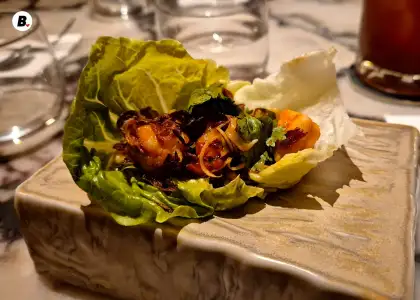
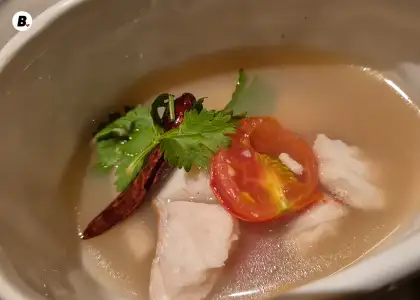
We then moved on to the mains: Kang Panang Nuea Nong Lai, Khai Look Khueay, and Kung Pad Prik Kluea.
Before your tastebuds can run away from you after the intense Tom Sap Pla Khao, Sabai served the coup de grâce of the menu: the Kang Panang Nuea Nong Lai — stewed beef silver shank in rich, Panang curry — which slowed the meal back down. It brought a depth of flavor that is new but also familiar, with its creamy, nutty flavors and a hint of sour and sweet notes.
In this rollercoaster of a ride, the Tom Sap Pla Khao launched us into hyperspeed, after which we found ourselves in a slow, steady pace where the surrounding visual effects mesmerized us as this main dish took hold of us with its richly spiced and thick sauce.
The mains are served with Khao Suay, freshly steamed jasmine rice. They say, “No Thai meal is complete without it.” Truly a Thai restaurant that goes after our hearts.
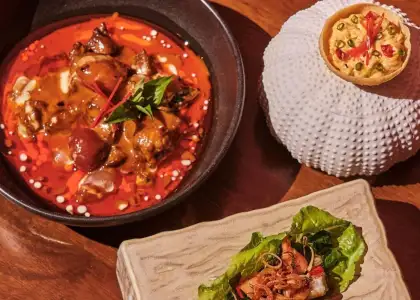
We then sampled the Khai Look Khueay, which are fried, boiled eggs with sweet tamarind sauce. Also known as “son-in-law eggs,” the Khai Look Khueay is an easy dish to love.
While boiled eggs hardly deliver flavor, the recipe easily resolves this by pairing them with a tamarind sauce whose sour and sweet flavors instantly elevate the dish. Topped with crispy, deep-fried shallots that add to the sweet, salty flavors, the end result is a well-rounded and deeply comforting dish.
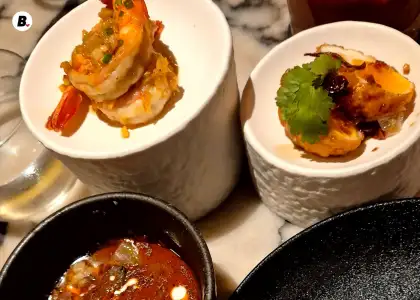
The third main dish in the sample menu was the Kung Pad Prik Kluea, a simple, straightforward dish that remains a major player in the menu.
The prawns were expertly stir-fried with the garlic, chili, and salt aromatics, removing any fishy flavor while remaining plump and juicy. It was a savory respite between the sour-salty Khai Look Khueay and the deep, rich Kang Panang Nuea Nong Lai — and it still managed to shine on its own. Seafood lovers will not be disappointed with this dish, but chili lovers will find it a bit more muted in comparison to the Tom Sap Pla Khao.
Fortunately, however, they serve extra fish sauce and chili on the side so you can customize the flavors as you desire.
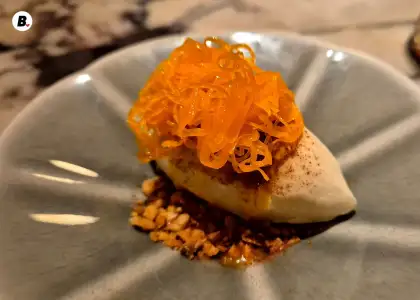
After such an exciting (but also comforting) ride of a menu, the tracks came to a halt on a tropical beach.
Giving our meal a perfect, sweet finish, the Ice Cream Khai Kang was a simple, refreshing dessert that offered the right amount of coconut.
Also known as Foi Thong, the golden egg yolk threads on top offered a subtle, sweet flavor and a hint of pandan that combined well with the coconut ice cream but it struggled to stand out on its own. The dish also included some caramelized crushed nuts which added enough sweet and nutty flavors.
Given the spice-laden menu, we were expecting a spicy dessert, but alas, we were very much off the spicy ride — and we can’t say that we didn’t miss the heat.
For drinks, we ordered the “One in a Melon,” a cocktail which combined pink gin with homemade Thai basil syrup, fresh watermelon juice, and lemon. Refreshing, fruity, and chill. It was exactly the kind of drink you would need as a palate cleanser in between the spicy and savory bites throughout the meal.
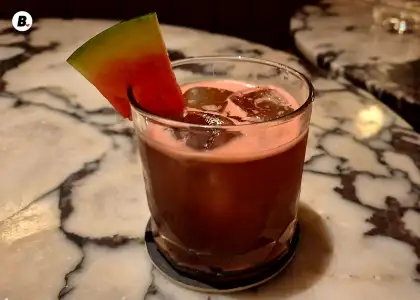
Final Thoughts
Overall, those who are not used to Thai cuisine don’t need to be intimidated. While the majority of their menu and dishes are unfamiliar, Sabai delivers on offering a comforting and flavorful experience. It was a rollercoaster ride from start to finish, but in the best way possible, as the dishes also balanced each other out and don’t let your tastebuds crash in the process.
The spice is expertly infused into the dishes, adding just the right amount of heat without numbing your tongue into oblivion. Sabai’s menu is well-curated to let you taste the notes of each dish — although some notes very much announce their presence.
Sabai offers a truly unique experience to their guests, challenging their notion of Thai cuisine instead of watering down flavors to suit non-local palates. Despite their lofty goals, Chef Tob’s menu effortlessly brought everyone on board, educating them on authenticity without pushing away a curious crowd. Instead, Sabai was able to welcome guests with ease, saying: “Tara, Sabai/sabay tayo (Come on, let’s go to Sabai/together)!”
Sabai is set to open this July 2025. To stay updated on their opening and exclusive invites, sign up via their website. Follow them on Instagram to know more.
Location: Next to Uma Nota, Shangri-La The Fort 30th Street, corner 5th Ave, Taguig City, 1634
Opening Hours: To be announced
Enjoyed this article? Check out our previous Delish Eats reviews here .
Get the latest curated content with The Beat Asia's newsletters. Sign up now for a weekly dose of the best stories, events, and deals delivered straight to your inbox. Don't miss out! Click here to subscribe.









